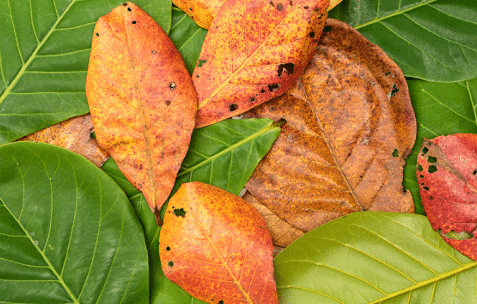Bettas are known for their beautiful flowing tails, but unfortunately, they can suffer from a disease that results in a shortened or even amputated tail. This ailment is called Betta fin rot and it’s common among aquarium fish, especially bettas. It’s caused by bacteria and will spread quickly if left untreated. In most cases, Betta fin rot is permanent and will require your betta to live with a shortened tail for the rest of its life. Luckily there are some steps you can take to prevent this disease from spreading through your fish tank. In this article, we’ll be discussing all you need to know about reverse betta fin rot in Bettas and how to treat it using indian almond leaves for betta.
What is Betta Fin Rot?
Betta fin rot is a type of bacterial infection that causes the fins of a fish to become damaged, rotting, and discolored. This happens when bacteria enters the open wounds of your fish and spreads throughout the bloodstream. If the bacteria spread to the fish’s other organs, it can cause serious illness and even death. Betta fin rot is most common among aquarium fish, especially bettas. It’s caused by bacteria and will spread quickly if left untreated. Betta fin rot can be easily identified by the following symptoms:
– Discoloration of fin edges, followed by rotting.
– Cloudiness in the fish’s eyes.
– Swelling of the area around the wound.
– Damage to the fish’s fins and tail.
– Stubbornness and lethargy.
– Loss of appetite.
– Increased breathing and heart rate.
How Does Betta Fin Rot Occur?
Betta fin rot is caused by bacteria that enter the wounds on your betta’s fins and spread throughout the bloodstream, damaging organs in the process. The most common bacteria associated with Betta fin rot is Aeromonas hydrophila (A. hydrophila). This bacteria thrives in warm, stagnant water, which is especially common in aquariums. A. hydrophila will spread quickly among fish in aquariums where the water is dirty and uncycled.
This means that aquariums that aren’t receiving regular cleaning and maintenance are more likely to contract Betta fin rot. Betta fin rot can also occur if your betta’s fins have been physically damaged. For example, if your betta gets caught in a net or its fins get caught in an aquarium filter, Betta fin rot could occur as a result of the injuries.
Reverse Betta Fin Rot With Indian Almond Leaves
Reverse Betta fin rot with Indian almond leaves. There are several herbs you can use to treat Betta fin rot, but Indian almond leaves are by far the most effective. You can purchase Indian almond leaves in the produce section of most grocery stores. Make sure the leaves are fresh and without any damage.
Step 1: Prepare the Indian almond leaves. – Place the Indian almond leaves in a bowl of warm water. Allow the water to sit until it’s lukewarm. – Drain the water from the bowl and add fresh water to the bowl. – Drain the water again and add the warm water to the fish tank.
Step 2: Introduce the Indian almond leaves to the fish tank. – Place the Indian almond leaves in the tank where they will be able to float freely. – The Indian almond leaves will release a chemical that helps fight infection and promotes healing.
Identifying Reverse Betta Fin Rot
You can identify reverse Betta fin rot by checking your betta’s fins for discoloration and damage. If your betta is exhibiting any of the symptoms of Betta fin rot, it’s important to identify and treat the disease as soon as possible. If Betta fin rot is left untreated, it can quickly progress to fin rot and lead to the amputation of fins. This will not only make your betta’s fins look unsightly, but it can also hinder their ability to swim and eat. If Betta fin rot is left untreated, it can spread to other fish in the tank and quickly become an epidemic.
Conclusion
Betta fin rot is a common ailment among aquarium fish. It’s caused by bacteria that enter the wounds on your betta’s fins and spread throughout the bloodstream. Betta fin rot can be easily reversed with the use of Indian almond leaves. These herbs have anti-inflammatory and antimicrobial properties that will fight the bacteria causing the infection. If you notice that your betta’s fins are discolored or appear to be rotting, you may want to check for signs of Betta fin rot. This can be easily treated with a few Indian almond leaves.



